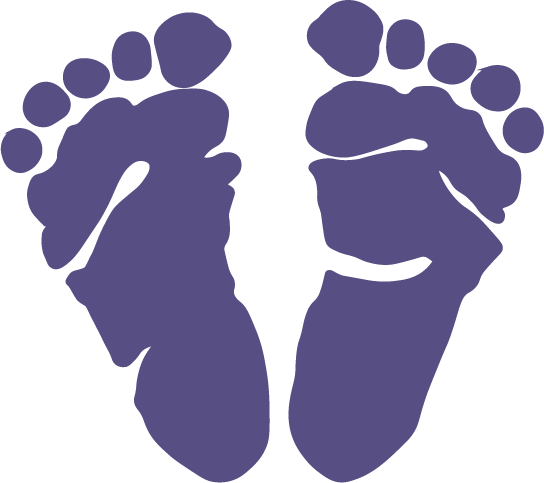From: American Academy Pediatrics
Your children may have questions about the changing climate. Many are hearing about or experiencing climate-change-fueled disasters such as wildfires and severe storms.
Climate change affects everyone, but it impacts kids the most. Children are especially vulnerable to environmental health harms since they are still growing and have higher exposure to air, food, and water based on weight.
While the climate crisis can feel like an overwhelming topic, there are healthy ways to talk with kids about it. We can communicate in a way that is honest, hopeful, developmentally appropriate, and action oriented. By helping kids understand the issue of climate change and how it affects their health and futures, we empower them to make a difference.
Toddlers and Young Children (age 1-5)
Toddlers are just beginning to learn about their relationship with the world. It’s a perfect time to introduce them to the joys of nature. Here are some ideas:
- Nature walks. Take walks to show how weather affects nature. Talk about how weather makes the seasons. You can point out bird nests, for example, and talk about how weather influences when and where birds make their nests. Talk about other wild animals and discuss how they all have homes that need protecting.
- Gardening. Pick out fruit, vegetable, or flower seeds to plant in your garden, or herbs to plant in kitchen boxes. Young children can help take care of plants, and get excited seeing something grow from nothing. Talk about how your child needs air to breathe and so do plants and animals. When pollutants get in the air, that affects their health.
- Local focus. Point out local effects of climate change depending on your location. Some areas may be more prone to wildfires, hurricanes and floods, while others may experience longer and more intense heat waves or an increase in illness from mosquitoes and ticks.
School-age Children (age 6-12)
Begin explaining concepts behind climate change in simple scientific terms. Ask what they know and fill in blanks or research it together. NASA has online resources to help parents go through each aspect of climate change.
Make connections
Discuss how personal choices can affect the environment and show respect for nature. Calculate your family’s carbon footprint together and ask them how they suggest lowering it. Examples include:
- Turn lights off after leaving the room.
- Try biking or walking, taking public transit or carpooling, when possible.
- Eat a more plant-forward diet.
Explain how people – including kids – can be powerful forces in protecting the environment. Point out that choices we make can help make our planet, and people, healthier.
Teenagers (age 13-18)
Teens are more aware of how issues may influence all aspects of their lives. Discuss show climate change can affect our economy and society. This can spark scientific curiosity and introduce the idea of civic responsibility.
Relate to recent events
Pick a recent or ongoing event and discuss how climate change might have contributed to the event and its the economic effects. For example:
- Talk about how climate change is causing longer and more severe wildfires in California, resulting in the loss of homes and businesses. Discuss how it is also causing air pollution that forces people indoors. Consider the mental health effects all of this can have on families.
- Explore how climate change doesn’t affect everyone equally, and the ways some communities experience more health risks. Discuss how everyone should have an equal opportunity to clean air and water.
Take action
Encourage your teen to come up with solutions and creative ways to express their ideas. Examples include:
- Use a science class presentation or a school, Scouts, 4-H or other project to educate peers about the need for climate change solutions.
- Form a club at school with other interested classmates and brainstorm how to help your local community.
- Write for local or state newspaper about why teens care about the climate.
- Join a national youth advocacy organization for more inspiration.
- Work together to make changes at home, incorporating your teen’s ideas. Participate in advocacy as a family.
Focus on solutions
Pace your discussions to help prevent stress and anxiety. When disasters such as wildfires and hurricanes happen, be sure to limit your child’s media use to cut down on the amount of distressing footage they see and hear on the news. (See Talking to Children About Tragedies and Other News Events.) Take take nature breaks when possible.
When you talk with your child, stay hopeful and focused on solutions. We have tools to take climate action right now, remind them, and these can have immediate benefits for our health. Even if the climate crisis is accelerating, emphasize that together we can clean up our air and water and reduce our carbon footprint.
Be a role model
Think about ways you can advocate for a healthier environment for children.
- Ask your school district to incorporate a climate curriculum
- Share news of great climate advocacy work with your family
- Reach out to local, state and federal legislators with your family to encourage climate action
Youth leadership
Kids are the next generation of innovators and thinkers. Youth leadership is already making a huge difference. If we nurture a love for the environment early, children may just come up with the best solutions. Don’t be surprised if they teach you something, too, along the way.
Talk with your pediatrician
If you have questions about how climate change can impact your children, talk with your pediatrician. Your regional Pediatric Environmental Health Specialty Unit (PEHSU) have staff who can also talk with parents about concerns over environmental toxins.



